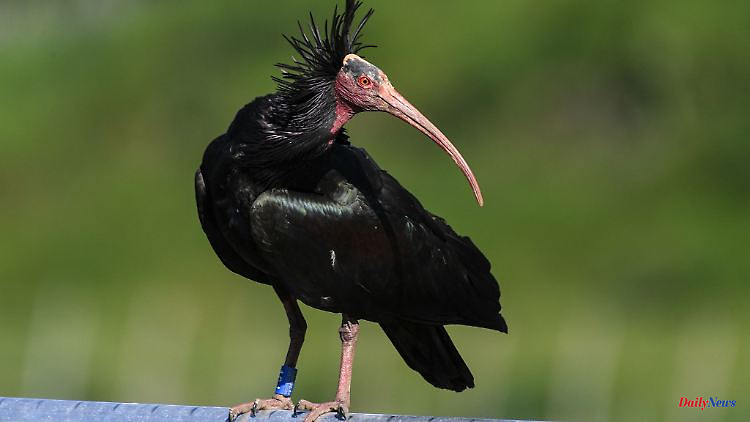Come back to stay: A study confirms that even in the event of setbacks, the northern bald ibis that have been reintroduced to Germany and Austria have good long-term prospects.
Berlin / Überlingen (dpa / lsw) - According to a study, the costly resettlement of the northern bald ibis in Europe is on the right track. The population has good prospects for long-term survival, said the Leibniz Institute for Zoo and Wildlife Research (Leibniz-IZW) in Berlin. The project is best known for the impressive images of birds reared in Germany and Austria, which follow microlight aircraft across the Alps to their Italian wintering grounds.
From there, animals now return independently and raise chicks themselves. The scientists led by Johannes Fritz from the Austrian company Waldrappteam Conservation and Research and Sinah Drenske from Leibniz-IZW evaluated data from almost 400 birds over a period of twelve years (2008-2019) and modeled future scenarios.
There are release populations in Überlingen on Lake Constance and in Burghausen in Bavaria. Until the 17th century, northern bald ibis lived on rocks in Überlingen, among other places. Then bird hunters became their undoing. Most recently, the animals were practically extinct in the wild. The northern bald ibis at Lake Constance is one of four colonies that are part of the reintroduction project in the Alps.
According to researchers, the released population, which has been successfully reproducing since 2011, currently comprises around 200 birds in Austria and southern Germany. 250 wild young birds grew up in the colonies. The survival rate in the first year is 52 percent for the wild hatched and 73 percent for the released young birds, as the team reports in the journal Oryx. The survival rate of adult birds is also high, as is the reproduction rate. The reproductive success is well above the values of most wild stocks and zoo colonies, said Fritz. "We attribute this to the rich food supply in the breeding areas."
The population can also compensate for environmental disasters quite well, it said. In November 2022, for example, 27 northern bald ibises died in a hurricane. Despite the good prospects, further measures are necessary. Losses due to electrocution on unsecured power poles and illegal bird hunting in Italy were to be combated. There should also be more releases.
According to conservation groups, the northern bald ibis (Geronticus eremita) is one of the rarest birds in the world. Distinctive features are its bald face, the sickle-shaped, red beak and ruffled neck feathers. The species likes to breed near bodies of water on rocky cliffs and cliffs. The geese-sized migratory birds were once widespread in the Alpine and Mediterranean regions.
Since migratory behavior is not inherited, but rather passed on to the offspring by the parents, the hand-reared young birds were taught to follow their human foster parents in the microlight aircraft. This is how they got to their winter quarters in Tuscany via the Alps.
According to the research team led by Fritz and Drenske, it is still uncertain how climate change will affect the population. The start of the autumn migration is already being gradually delayed. As a result, the birds are having increasing problems crossing the Alps - presumably because of a lack of supporting thermals.












